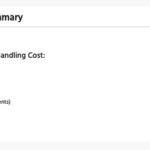The D Chord On Guitar is a cornerstone for any aspiring guitarist. It’s one of the first chords many beginners learn, and for good reason. This bright and versatile major chord appears in countless songs across genres, from rock anthems like U2’s “Desire” and pop hits such as Demi Lovato’s “Let It Go”, to classics like The Cars’ “My Best Friend’s Girl”. Learning the D chord unlocks a vast repertoire of music and is a crucial step in your guitar journey.
This guide will walk you through how to play the D chord in its most common open position and introduce you to a movable barre chord version. We’ll also provide essential tips and troubleshooting advice to ensure you master this fundamental chord quickly and efficiently.
Playing the Open D Chord
The open position D major chord is the most common and beginner-friendly way to play this chord. It utilizes the open strings of the guitar and is relatively easy to finger once you understand the placement.
Finger Placement for Open D
Here’s how to position your fingers to play the open D chord:
- Index finger: Place your index finger on the 2nd fret of the G string (3rd string from the bottom).
- Middle finger: Place your middle finger on the 2nd fret of the high E string (1st string from the bottom).
- Ring finger: Place your ring finger on the 3rd fret of the B string (2nd string from the bottom).
Make sure your fingertips are just behind the fret and pressing down firmly enough to get a clear sound without buzzing. Try to arch your fingers slightly to avoid accidentally muting adjacent strings.
Strumming the D Chord
Once your fingers are in position, strum downwards across the top four strings – D, G, B, and high E. Avoid strumming the lower E and A strings for a clean D major chord sound in this open position. Listen carefully to ensure each note rings out clearly.
Common Challenges and Solutions
Beginners often face two main challenges when learning the D chord: finger positioning and unwanted string muting.
Problem 1: Finger Positioning and Shape: Getting your fingers into the correct shape can feel awkward at first.
Solution: Practice transitioning between the D chord and other common beginner chords like G major or A major. These chords often appear together in song progressions. Try a simple exercise: strum the D chord for four counts, switch to a G chord for four counts, and then return to D. This repetition builds muscle memory and improves your finger dexterity.
Problem 2: Muting the Low E and A Strings: Accidentally hitting or muting the unwanted low E and A strings is another common issue.
Solution: For the low E string, try gently wrapping your thumb around the guitar neck and lightly touching the string to dampen it. Regarding the A string, while it’s technically part of the D major chord and won’t sound dissonant if strummed, for a cleaner D major chord in this voicing, aim to avoid it. Focus on improving your strumming accuracy over time. Start slowly and gradually increase your strumming speed as your precision improves. Clean playing is more important than speed when you are starting out.
Exploring the D Barre Chord
As you progress, you’ll encounter the barre chord version of the D major chord. Barre chords are incredibly useful as they are movable shapes, allowing you to play different chords all over the fretboard. While barre chords require more finger strength initially, mastering them significantly expands your chord vocabulary.
Barre Chord Technique for D
To play the D major barre chord in the 5th position:
- Index finger: Barre your index finger across all six strings at the 5th fret. Press down firmly to ensure all strings ring clearly.
- Middle finger: Place your middle finger on the 6th fret of the G string (3rd string from the bottom).
- Ring finger: Place your ring finger on the 7th fret of the B string (2nd string from the bottom).
- Pinky finger: Place your pinky finger on the 7th fret of the high E string (1st string from the bottom).
Strum from the A string downwards (the top five strings). The root note for this barre chord is on the A string. This D barre chord variation produces a fuller, richer sound compared to the open position D chord. It can be challenging initially, especially requiring strength and flexibility in your index and ring fingers. Electric guitars, with their lighter string tension, often make barre chords slightly easier to play.
Benefits of Barre Chords
Learning barre chords, starting with the D barre chord shape, opens up a world of possibilities on the guitar. Once you understand the barre chord shape, you can play various major chords by simply moving this shape up and down the fretboard. This knowledge allows you to quickly learn chords like C major, E major, F major, and many more.
The D chord, in both its open and barre chord forms, is an essential chord for any guitarist. While it may take some practice to play cleanly and quickly, with patience and consistent effort, it will become second nature. Embrace the learning process, and soon you’ll be confidently playing the D chord and unlocking countless songs on your guitar.
To further expand your chord knowledge, explore resources like Fender Play’s chord library, which offers a wealth of information on different chord types and tips for mastering them. Happy playing!

